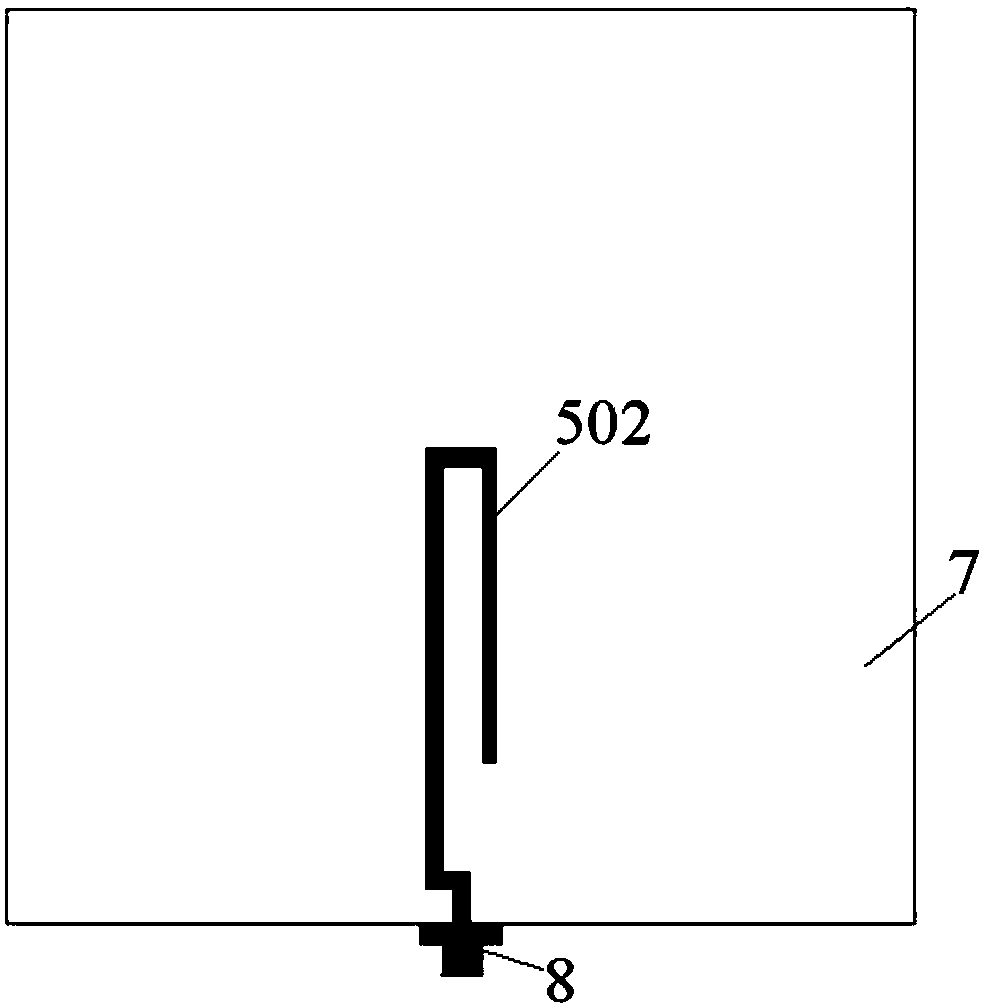Small-sized broadband end-on-fire antenna
An end-fire antenna, broadband technology, applied in the field of small antenna terminals, can solve the problems of narrow operating frequency band, low gain, large antenna size, etc., and achieve the effect of broadband gain, high gain, and increased impedance
- Summary
- Abstract
- Description
- Claims
- Application Information
AI Technical Summary
Problems solved by technology
Method used
Image
Examples
Embodiment Construction
[0032] Please refer to figure 1 , figure 2 and image 3 , the present invention is a small broadband end-fire antenna, which includes a director 1, the director 1 is placed at the front end of the antenna, and has several symmetrical gate-shaped broken line structures. Gain adjuster 2, the two ends of the gain adjuster 2 are connected to the middle of the director 1, which is formed by a bent line segment. The exciter 3, the exciter 3 is placed parallel to the director 1, the exciter 3 includes a two-arm vibrator 301 structure, and the two-arm vibrator 301 is a number of symmetrical gate-shaped broken line structures. The two ends of the tuner 4 are connected to the inner side of the two-arm vibrator 301, which is a bent line segment structure. The feeding balun 5 is an electromagnetically coupled balun with a microstrip structure. The front of the feeding balun 5 is a microstrip parallel double-wire 501 structure, and its upper end is connected to the inner side of the tw...
PUM
 Login to View More
Login to View More Abstract
Description
Claims
Application Information
 Login to View More
Login to View More - R&D
- Intellectual Property
- Life Sciences
- Materials
- Tech Scout
- Unparalleled Data Quality
- Higher Quality Content
- 60% Fewer Hallucinations
Browse by: Latest US Patents, China's latest patents, Technical Efficacy Thesaurus, Application Domain, Technology Topic, Popular Technical Reports.
© 2025 PatSnap. All rights reserved.Legal|Privacy policy|Modern Slavery Act Transparency Statement|Sitemap|About US| Contact US: help@patsnap.com



